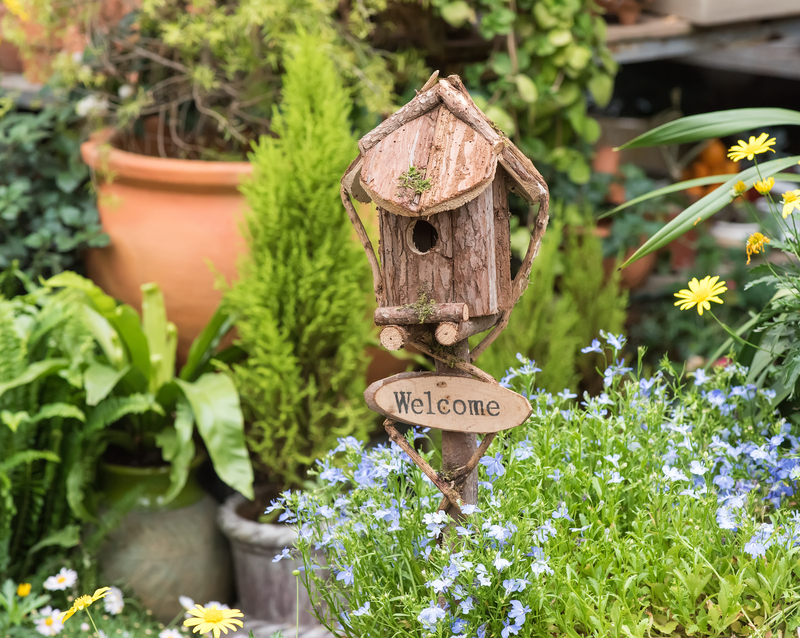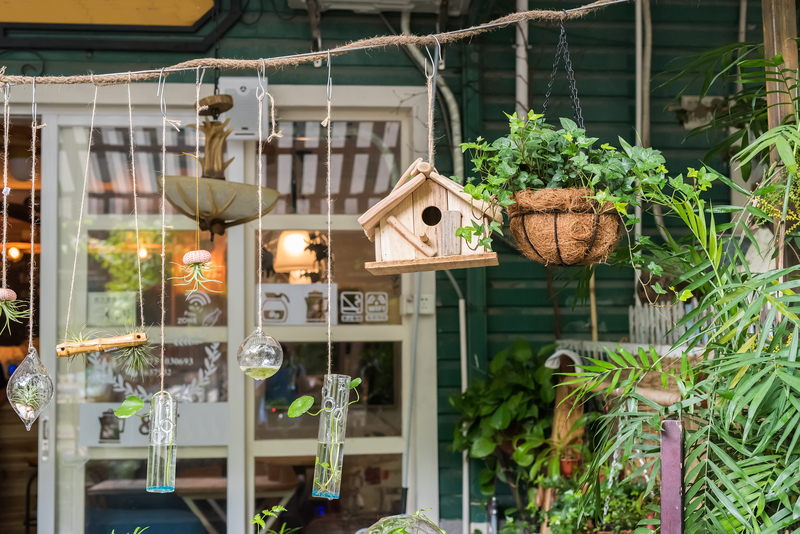Steering Away From Harmful Plastics: Your Guide
In a world awash with convenience, plastic products play an undeniable role in everyday life. Yet, this convenience often comes with a significant price: our health and the health of the planet. The proliferation of harmful plastics in consumer goods, packaging, and household items prompts an urgent need to reconsider our reliance on these materials. Steering away from harmful plastics is not just a trendy movement--it's a vital step toward safeguarding our environment and well-being.

Understanding The Dangers Of Harmful Plastics
To begin your journey in avoiding dangerous plastics, it's essential to understand why certain plastics are problematic and the risks they pose. Not all plastics are created equal, and some contain toxic chemicals that can leach into food, water, and even the air we breathe.
What Makes Plastics Harmful?
- BPA (Bisphenol A): Common in polycarbonate plastics and epoxy resins, BPA disrupts endocrine function, mimicking hormones and potentially leading to reproductive and developmental issues.
- Phthalates: These plasticizers are often present in soft plastics, such as vinyl and food wrap. Research links phthalates to hormonal imbalances and developmental problems in children.
- Styrene: Used in the manufacture of polystyrene (Styrofoam), styrene is a possible human carcinogen and can contaminate food and drinks served in polystyrene containers.
- Microplastics: Small plastic particles found throughout the environment, these pollutants can be ingested with food and water, potentially causing inflammation, hormone disruption, and other health issues.
It's critical to note that the toxic impact of plastics is not just about direct human consumption. During production, usage, and disposal, these plastics can leach harmful substances into soil, water, and air, affecting all forms of life.
The Environmental Toll of Toxic Plastics
Beyond human health, harmful plastics are notorious for their durability and inability to decompose naturally. *Each year, millions of tons of plastic waste end up in oceans and landfills*, threatening marine life, wildlife, and disrupting ecosystems. Wildlife can ingest plastics or become entangled, causing injury or death. Additionally, as plastics break down into microplastics, the pollutants permeate food chains across the globe.
Types of Harmful Plastics to Avoid
Knowing which plastics are most hazardous allows you to make informed decisions. Steering away from harmful plastics starts with identifying their resin identification codes (RIC), typically stamped on containers or packaging, represented by numbers inside the recycling symbol.
Plastics By The Numbers
- #3 - PVC (Polyvinyl Chloride): Contains phthalates and releases dioxins, especially when burned.
- #6 - PS (Polystyrene): Known as Styrofoam, polystyrene leaches styrene, a possible carcinogen.
- #7 - Other: Often includes polycarbonate which contains BPA or other chemical additives.
Other numbers (#1 - PET, #2 - HDPE, #4 - LDPE, and #5 - PP) are considered safer, especially for single use, but even these can break down over time and release chemicals under certain conditions, such as heating. Whenever possible, opt for alternatives to plastic or stick to reusables with better safety records.
Choosing Safe and Sustainable Alternatives
Transitioning away from harmful plastics need not be daunting. There are numerous sustainable, safe, and practical replacements. Let's break down alternatives by common uses:
Food Storage and Preparation
- Glass containers: Durable, non-toxic, suitable for microwaving and dishwashing.
- Stainless steel: Ideal for lunch boxes and water bottles; long-lasting and recyclable.
- Silicone: Food-grade silicone is safe for cooking and storage (ensure it's BPA and phthalate-free).
- Bamboo and wood: Useful for utensils and cutting boards (ensure they're untreated).
Shopping and Packaging
- Cloth shopping bags: Replace single-use plastic bags with reusable cotton, jute, or hemp bags.
- Beeswax wraps: A popular substitute for plastic wrap, ideal for wrapping food and covering bowls.
Personal Care and Cleaning
- Bar soaps and shampoos: Reduce plastic bottle use by switching to soap and shampoo bars.
- Compostable scrubbers and sponges: Made from natural fibers instead of synthetic plastics.
By gradually replacing plastic household items with safer choices, you decrease plastic demand and exposure to harmful chemicals.
Practical Steps for Steering Away from Harmful Plastics
Making the switch toward non-toxic, environmentally safe alternatives is easier than you might think. Here's how you can start today:
1. Audit Your Plastic Usage
- Make a list of daily, weekly, and monthly plastic items you use.
- Identify which are single-use and which you could easily swap for safer alternatives.
2. Learn to Read Labels
- Check the recycling codes on plastic containers and packaging; avoid #3 (PVC), #6 (PS), and #7 (Other/BPA).
- Watch for terms like "BPA-free". While better, always verify what chemicals replaced BPA--some substitutes (like BPS) may be equally concerning.
3. Buy In Bulk and Avoid Excess Packaging
- Purchase food and goods from bulk bins, using your own containers.
- Choose products packaged in glass, metal, or paper when possible.
4. Bring Your Own Reusables
- Carry a water bottle, coffee cup, and food container made from safe materials.
- Stash reusable shopping and produce bags in your car or bag.
5. Support Businesses With Sustainable Practices
- Favor companies who use eco-friendly packaging and take-back programs.
- Ask local stores or restaurants to reduce their use of plastics--your feedback makes a difference!
6. Reuse and Upcycle
- Before discarding plastics, consider reusing them for storage or crafts.
- When items reach the end of life, recycle them responsibly at designated collection points.
How to Spot Greenwashing When Choosing Plastics Alternatives
One unfortunate side effect of increased environmental awareness is 'greenwashing,' where brands exaggerate their eco-friendliness. Here's how to make sure you're truly steering away from harmful plastics:
- Look for third-party certifications (e.g., USDA Biobased, Cradle to Cradle, or Ecolabel).
- Read the fine print: Are "bioplastics" truly compostable, or do they require commercial facilities?
- Beware vague language: "Green," "eco-friendly," and "natural" are often marketing terms without clear standards.
- Research brands and read customer reviews.
Understanding Recycling and Disposal
Recycling is only one piece of the puzzle in addressing the plastic problem. Many plastics, especially those with hazardous additives, can't be safely recycled and end up in landfills or incinerators--even when placed in recycling bins.
Key Facts on Plastic Recycling
- Plastics labeled #1 (PET) and #2 (HDPE) are most commonly recycled; others like #3 (PVC) and #6 (PS) are rarely accepted.
- Mixed or laminated plastics (such as chip and snack bags) are almost impossible to recycle.
- Even recyclable plastics can degrade after one or two rounds of recycling, eventually requiring disposal.
- Food contamination can spoil otherwise recyclable plastics.
Best Practice: Reduce plastic use first, reuse when possible, and recycle only as a last resort.
The Global Movement Against Harmful Plastics
Communities, organizations, and governments are taking action by enacting bans, introducing new technology, and raising awareness. Initiatives include:
- Bans on single-use plastic bags, straws, and polystyrene containers in cities and countries worldwide.
- Investment in biodegradable and compostable alternatives that break down faster and more safely.
- Educational campaigns about the dangers of plastic pollution and how to reduce plastic footprint.
By participating in these efforts--through voting, advocacy, or daily habits--you can be part of a global push to steer away from harmful plastics.
Empowering Future Generations
Children and young people will inherit the world we build today. Teaching them about the dangers of disposable plastics and involving them in sustainable habits fosters environmental stewardship for life. Some tips:
- Involve kids in shopping with reusable bags and choosing plastic-free items.
- Teach crafts that upcycle or replace common plastic household items with eco-friendly materials.
- Discuss how plastics affect wildlife and encourage classroom or community cleanups.

FAQ: Steering Away From Harmful Plastics
Why should I care about avoiding dangerous plastics?
Plastic pollution not only harms the environment and wildlife, but many plastics also contain chemicals linked to cancer, hormone disruption, and developmental problems. Reducing your exposure improves both personal health and that of the planet.
Are 'compostable' plastics a good alternative?
Not always. Many compostable plastics only break down in industrial composting conditions, which may not be available in your area. When in doubt, choose truly biodegradable, non-plastic materials.
What are the best materials for food storage?
Glass, stainless steel, and food-safe silicone are excellent, reusable options that do not leach chemicals.
Can I fully eliminate plastics from my life?
Completely eliminating plastics may not be realistic, but significantly reducing your use--especially of harmful types--is achievable and impactful.
Conclusion: Start Your Journey Today
Steering away from harmful plastics is an empowering, urgent, and achievable mission. By understanding the dangers, recognizing hazardous plastics, choosing safer alternatives, and spreading awareness, each of us can make an immediate and long-term difference.
Small changes--like bringing a reusable bottle, choosing glass over plastic for food storage, or teaching the next generation about plastic pollution--add up to big impacts. Start today, and be part of the global movement to create a cleaner, healthier, and more sustainable future.
Ready to begin? Audit your daily plastic use, take small steps, and celebrate each sustainable change. Every action counts on the journey to a plastic-free life!